Join More Than 50,000+ Subscribers and get latest camera news and rumors
NEW CAMERA VIDEOS ON YOUTUBE
|
By admin, on July 31st, 2023
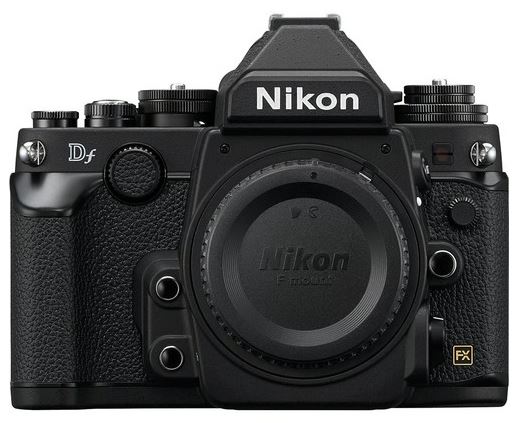
We have some additional information about the upcoming Nikon ZF full-frame mirrorless camera. The body price of the camera is confirmed to be under $2000 which is really a great surprise if true, the camera will have the same sensor that we have seen in the Nikon Z7 Mark II and not the Nikon Z8 (as we all know that both have the same 45.7 MP sensor resolution, but due to the integration of stacked CMOS sensor technology the manufacturing cost of the Nikon Z8 / Nikon Z9 sensor is much more and not feasible for Nikon to out the stacked CMOS sensor inside the upcoming Nikon Zf, it will use the same sensor as of Nikon Z7 Mark III.)
Take a look at the bundles of Nikon ZF mirrorless cameras to be announced soon
Nikon ZF Specification [Updated]
- 45.7MP FX-Format BSI CMOS Sensor
- Same sensor as of Nikon Z7 Mark II
- 10 fps Cont. Shooting, ISO 64-25600
- 493-Point Phase-Detect AF System
- Improved autofocus compared to Z6II/Z7II
- 3.6m-Dot OLED Electronic Viewfinder
- Very similar to the Nikon Zfc in terms of design/layout
- small LCD screen on top for aperture display
- New 3rd function on the sub lever of the shutter speed dial (besides photo/video) for B&W mode
- Has a little grip/bump like the Nikon Df (see the mockup pictures included in this post)
- Single SD memory card slot
- Better build quality compared to the Nikon Zfc
- Fully articulating screen
- Price for body only: $1,999
- Arrival on Aug 2023
- Nikon ZF Body Only (Black & Silver)
- Nikon ZF with 24-70mm F4 Lens
- Nikon ZF with 40mm SE Prime
- Shipping starts from the End of September 2023
Stay tuned more updates coming
Follow us on our social pages FACEBOOK | TWITTER | INSTAGRAM to get live news + Nikon Rumors 24X7
By admin, on July 30th, 2023
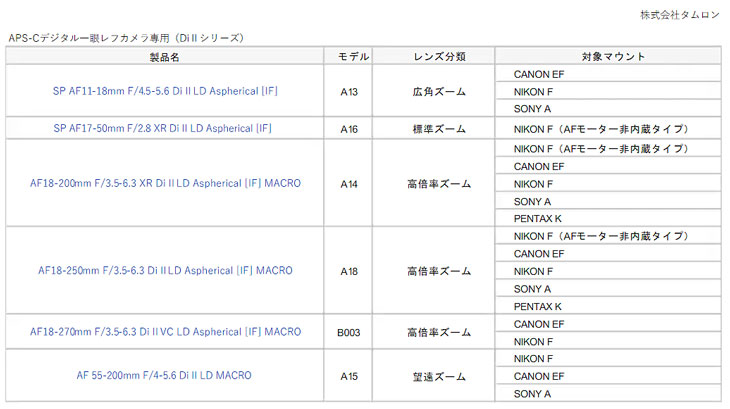
According to the latest reports coming out from Tamron itself, Tamron lenses specifically for DSLR mounts that include Nikon, Canon, Sony, and Pentax are no longer eligible to be repaired. This clearly indicates that after the transition of DSLR giants to mirrorless, third-party lens makers are now clearing out their DSLR lenses to put their entire attention towards the development and production of mirrorless lenses
List of Lenses No longer eligible to get repaired
- SP AF11-18mm F/4.5-5.6 Di II LD Aspherical [IF]
- SP AF17-50mm F/2.8 XR Di II LD Aspherical [IF]
- AF18-200mm F/3.5-6.3 XR Di II LD Aspherical [IF] MACRO
- AF18-250mm F/3.5-6.3 Di II LD Aspherical [IF] MACRO
- AF18-270mm F/3.5-6.3 Di II VC LD Aspherical [IF] MACRO
- AF 55-200mm F/4-5.6 Di II LD MACRO
- SP AF 17-35mm F/2.8-4 Di LD Aspherical [IF]
- AF 28-200mm F/3.8-5.6 XR Di Aspherical [IF] Macro
- AF28-300mm F/3.5-6.3 XR Di LD Aspherical [IF] MACRO
- SP AF 28-75mm F/2.8 XR Di LD Aspherical [IF] MACRO
- AF28-300mm F/3.5-6.3 XR Di VC LD Aspherical [IF] MACRO
- AF70-300mm F/4-5.6 XR Di LD MACRO
- SP AF90mm F/2.8 Di MACRO 1:1
- SP AF180mm F/3.5 Di LD [IF] MACRO 1:1
- SP AF200-500mmF/5-6.3 Di LD [IF]
Check out the latest camera news at the new camera
More Details in this PDF
By admin, on July 30th, 2023
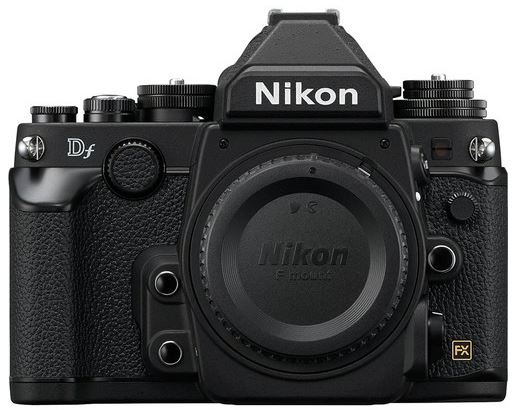
Yesterday, we reported to you that Nikon is expected to announce a new full-frame mirrorless camera in August or September 2023. Now, we have more confirmation of this, and the rumor mill has recently published an article with the core specs of the upcoming Nikon retro full-frame mirrorless camera, which could be a possible replacement for the Nikon DF and a bigger brother of the Nikon Zfc.
Take a look at the rumored set of specifications for the upcoming Nikon DF mirrorless camera.
Nikon ZF Mirrorless Specification
- 45MP sensor
- Improved autofocus compared to Z6II/Z7II
- Very similar to the Nikon Zfc in terms of design/layout
- small LCD screen on top for aperture display
- New 3rd function on the sub lever of the shutter speed dial (besides photo/video) for B&W mode
- Has a little grip/bump like the Nikon Df (see the mockup pictures included in this post)
- Single SD memory card slot
- Better build quality compared to the Nikon Zfc
- Fully articulating screen
- Code name N2137
- A few different lens kits/bundles will be available in the $2,000-$2,500 price range
- Will come with a new SE lens One of the bundles will be with the Nikkor Z 40mm f/2 (SE) lens
- Price for body only: $1,999
- Arrival on Aug 2023
TNC Take – Although the announcement date is very close, likely to be in the first week of August, and despite the fact that the announcement date is so close, we do not have any authentic leaked specifications or glimpses of its images. So even though highly trusted sources are saying that the camera may arrive in the first week of August, I am not able to believe them since I am waiting for further confirmation and authentic proof related to the specs and images of the camera. As soon as we get it, I will update you. Stay tuned for more updates.
Follow us on our social pages FACEBOOK | TWITTER | INSTAGRAM to get live news + Nikon Rumors 24X7
source NR.com
By admin, on July 29th, 2023
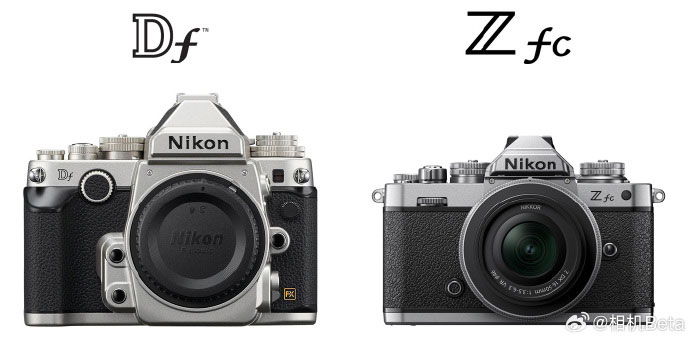
According to the latest rumors from Chinese websites / userforums – Camera Beta, there is a high possibility that Nikon may announce a new camera on August 2nd, 2023. The camera is believed to be the bigger brother of the Nikon ZFC, a retro-style camera with a full-frame FX format sensor. The price of the camera has even been predicted.
Nikon’s full-frame retro mirrorless camera Zf will be released on August 2nd? ] According to the latest news, Nikon may have an important new product conference on the 2nd of next month (August 2nd), which will bring a full-frame mirrorless camera. Judging from the previous news, the most likely should be It is the retro full-frame micro-single Zf. It is said that the price of the new machine will be around 2000-2500 US dollars, which is about RMB 14,000-18,000.
It’s interesting to see that they think a camera is coming within a week, so we’ll have to wait and see if this information is correct or not. In general, we get a lot of rumored information, leaked specifications, and images of a particular camera one or two weeks before its announcement. However, in the case of the Nikon DF successor or ZFC bigger brother, we do not have any information from credible sources yet.
From the previous Nikon mirrorless announcement patterns we have seen, There is a high probability that Nikon may release a full-frame mirrorless machine in August or September of 2023, but it could be the Nikon Z6 Mark III or something else. Right now, information related to the Nikon DF successor is very limited. We will update you as soon as we get any more information related to the camera.
Follow us on our social pages FACEBOOK | TWITTER | INSTAGRAM to get live news + Nikon Rumors 24X7
source weibo
By admin, on July 27th, 2023
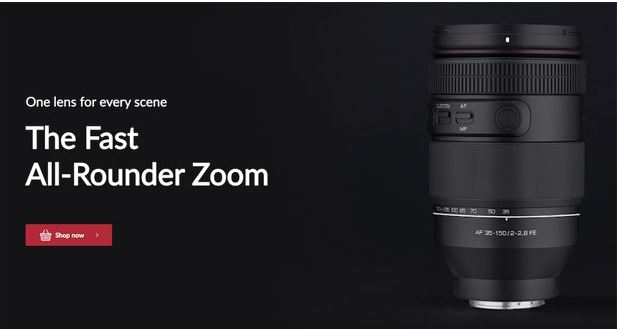
Samyang announces a new lens for L-mount, the 35-150mm f/2-2.8. Although this lens is already available for Sony E-mount and Tamron makes the same lens for E and Z mount, Tamron is not currently a part of the L-mount alliance. The L-mount alliance comprises Sigma, Panasonic, DJI, Astro Design, and Samyang. So, for now, Samyang will take advantage of the situation.
How many of you guys think the new Samyang 35-150mm F2-F2.8 is a perfect lens for Panasonic S5 Mark II camera ? Let me know in the comment section
Check B&H Store for its availability
Breaking News: Panasonic Unveils Breakthrough Organic CMOS Technology
Follow us on our social pages FACEBOOK | TWITTER | INSTAGRAM, to get LIVE News and Panasonic Rumor
By admin, on July 26th, 2023
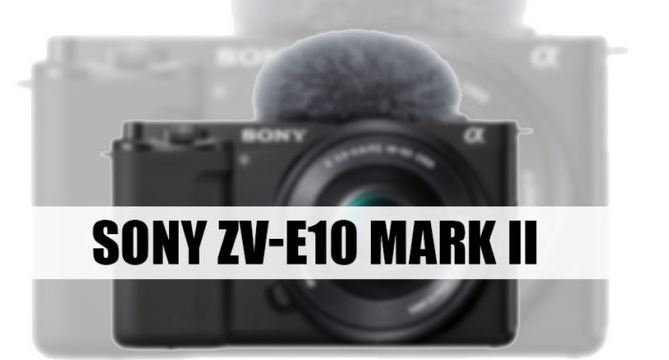
Sony ZV-E10 Mark II OR Sony ZV-E20 is expected to arrive before October 2023. According to the latest rumors coming out from the rumor mill, an accessory maker accidentally published the ZV-E20 accessory in their product catalog list. But unfortunately, the rumor mill did not publish any supporting images or screenshots to verify the information they have published , so take it with a grain of salt.
UPDATE @ 26 July 2023
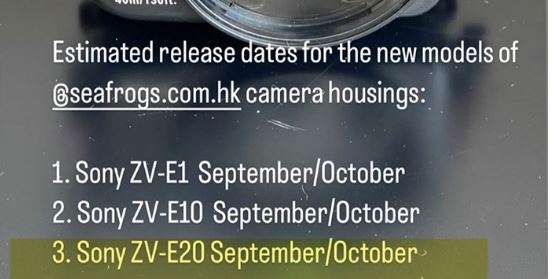
Finally, we have the image of the accessory maker that accidentally leaked the name of the Sony ZV-E20 camera. The accessory maker is C-Frog, which specializes in making waterproof cases for cameras. So, finally, we do have a strong lead. Now we have to wait for further confirmation.”
We will publish more updates as soon as they become available to us.
Follow us on our social pages FACEBOOK | TWITTER | INSTAGRAM, If you have time –>see more Sony Alpha Rumor
source addict
By admin, on July 25th, 2023
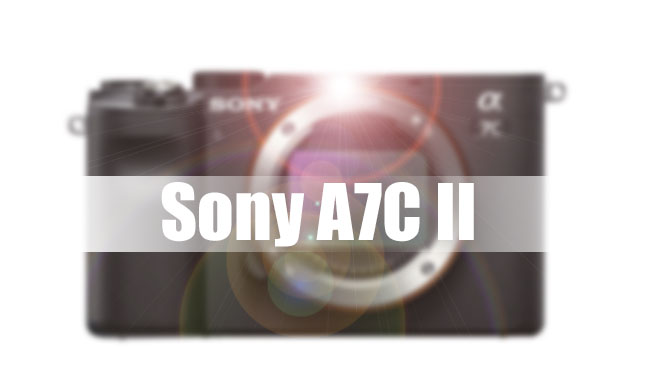
According to the latest rumors coming from the rumor mill, Sony is about to announce two different full-frame mirrorless cameras of the Sony A7C series.
The first camera is the Sony A7C Mark II. The camera will feature the same 33-megapixel sensor that we have seen in the Sony A7 IV camera. Not only this, we published its core specifications several months ago and you can look at the specifications of the upcoming Sony A7C Mark II camera once again.
Sony A7C Mark II Rumored Specification
- 33MP Full-Frame Exmor R CMOS Sensor
- BIONZ XR & AI Processing Unit
- Up to 10 fps Shooting, ISO 100-51200
- 4K 60p Video in 10-Bit, S-Cinetone
- 2.36m-Dot EVF
- 3″ 1.03m-Dot Vari-Angle Touchscreen LCD
- 759-Pt. Fast Hybrid AF, Real-time Eye AF
- Focus Breathing Compensation
- 5-Axis SteadyShot Image Stabilization
- Creative Looks and Soft Skin Effect
- 4K 15p UVC/UAC Streaming via USB Type-C
The next camera on the list is Sony A7CR. The Sony A7CR camera is rumored to feature a 61-megapixel full-frame sensor from the Sony A7R V camera with the same AI features that we have seen in the A7R V camera. But this time, we will have enhanced video core specifications and since it’s coming under the A7C series, we do hope and expect the A7CR camera will record 8K up to 30fps internally, and possibly in upcoming future updates it can be raised up to 60fps internal recording.
Sony A7CR Rumored Specification
- 61MP Full-Frame Exmor R BSI CMOS Sensor
- BIONZ XR & AI Processing Unit
- AI-Based Real-Time Tracking AF System
- 8K 24p, 8K 30p
- 8K 60p (With firmware update)
- 4K 16-Bit Raw Output; S-Log3/S-Cinetone
- 3.2″ 4-Axis Multi-Angle Touchscreen LCD
- 8-Stop 5-Axis Image Stabilization
- Dual CFexpress Type A/SD Card Slots
These are the initial set of rumors we have about these two upcoming cameras. The expected arrival date of these cameras is somewhere around the early fall of 2023, most probably in September of 2023.
Stay tuned and we will publish more updates as soon as they become available to us.
Follow us on our social pages FACEBOOK | TWITTER | INSTAGRAM, If you have time –>see more Sony Alpha Rumor
source SAR.com
|
KEEP THIS BLOG ALIVE - Support New Camera Buy Canon Lenses, Buy Music CD or Digital Camera at amazon it helps this site, and you do not pay anything extra, it is just a way to help support this site.

|













